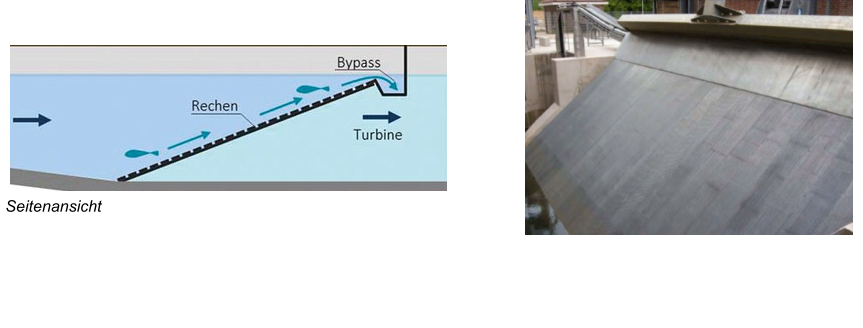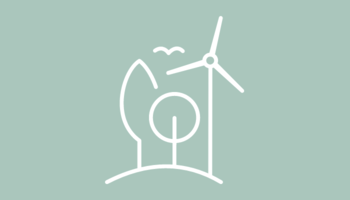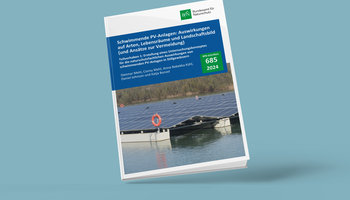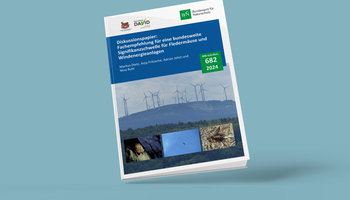In order to be able to formulate recommendations for the design and positioning of an inclined screen at hydropower plants, ethohydraulic tests with fish at an inclined screen with a flushing channel and bypass were carried out in the hydraulic engineering research laboratory at the TU Darmstadt. This aims to obtain information about the hydraulics of the inclined screen and also the behaviour of the fish before and at the facility.
The R&D project at the Technical University (TU) of Darmstadt in cooperation with the Institut für angewandte Ökologie (IfÖ) focuses on the hydraulic and biological processes in the vicinity of a migration barrier or a fish protection device and the migration corridor (bypass) linked to this. The aim of the project is to identify and understand the orientation and search behaviour of fish that want to migrate with a view to being able to use these mechanisms in a targeted way to enable the fish to rapidly find, accept and transit the migratory corridor or bypass. The key part of the project is carrying out ethohydraulic experiments in the laboratory and combining these results with information on fish behaviour from the wild. This project builds on the hydraulic/tactile results and findings of the project "Untersuchungen zum Orientierungs- und Suchverhalten abwandernder Fische zur Verbesserung der Dimensionierung und Anordnung von Fischschutzeinrichtungen vor Wasserkraftanlagen" (Departmental Research Plan 2013, FKZ 3513 85 0300) (Studies on orientation and search behaviour of migratory fish to improve the dimensioning and layout of fish protection facilities at hydropower plants) carried out from 2013 to 2015. The measurements of flow conditions carried out at the "Auer Kotten" (Wuppertal) hydropower plant form a basis for the laboratory studies.
Due to time constraints, the previous research project focused on conventional screens with vertically oriented bars and on screens placed at an angle to the current with horizontally oriented bars (what are known as angled screens). In order to continue the method of the previous study and the reaction zones in the near and far fields of fish protection facilities, this current project will now study the inclined screens that were already mentioned at that point as a further fish protection device. In contrast to the angled screen used in the previous project, the inclined screen consists of vertical bars and is slightly inclined to the floor of the water body. The water flows over the upper edge of the inclined screen – a flushing channel connects behind this and finally leads into a bypass.

Following previous studies (for example, the Auer Kotton hydropower plant on the Wupper, the circulating rake pilot plant on the Kinzig in Baden-Württemberg, laboratory and field trials on inclined screens by the Institut für angewandte Ökologie in cooperation with the Ingenieurbüro Floecksmühle, the OvER project at the RWTH Aachen), the ethohydraulic studies will focus on the hydraulic and tactile aspects in combination with an inclined screen, flushing channel and bypass. The project used a variety of test set-ups where the boundary conditions such as screen angle, inflow speeds and/or flushing channel and bypass admission flows could be varied. Characteristic behaviour such as e.g. exploring, staying still, escaping, yawing or (active/passive) drifting need to be identified and interpreted for each specific set-up.
The aim of the R+D project is to provide clear layout, calculation and design criteria for inclined screen bypass systems (including taking account of technical requirements e.g. for screen cleaning and removal of screenings).
Thanks to the close linking of the laboratory studies with the existing data and findings from a range of field research, the results can be transferred and validated both from the field phase to the laboratory phase and vice versa (for example, transfer to the hydropower sites on the Wupper for which results are available from telemetry studies).
A report will be written covering the technical and biological information as well as regulations and guaranteed planning limit values for the design of efficient and safely passable inclined screen bypass systems for downstream fish movement.
Technical University (TU) of Darmstadt
Fachbereich Bau- und Umweltingenieurwissenschaften
Institut für Wasserwirtschaft und Wasserbau
Franziska-Braun-Str. 7, 64287 Darmstadt
Prof. Dr.-Ing. habil. Boris Lehmann
Tel.: +49 6151 16 211 65
wabau(at)wb.tu-darmstadt.de
Institut für angewandte Ökologie
Neustädter Weg 25, 36320 Kirtorf-Wahlen
Dr. Ulrich Schwevers
Tel.: +49 6692/ 6044
info(at)ifoe.eu
Federal Agency for Nature Conservation (BfN)
II 3.2 Inland waters, floodplain ecosystems and water balance
Herr Jonas Kötting
Konstantinstr. 110
53179 Bonn
Tel.: +49 228/8491 1845
Jonas.Koetting(at)BfN.de
03.04.2024
Weiter

03.04.2024
Weiter

19.03.2024
Weiter
